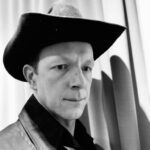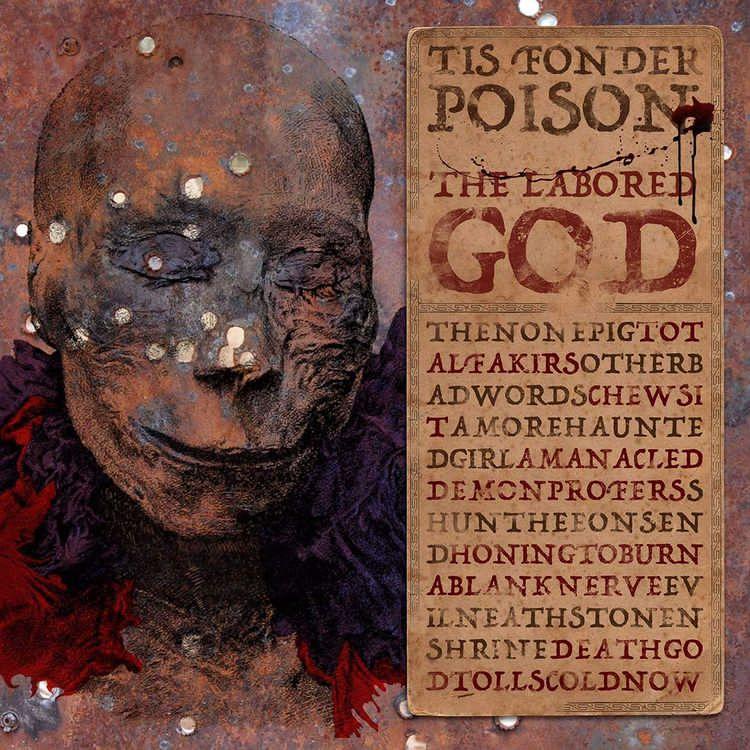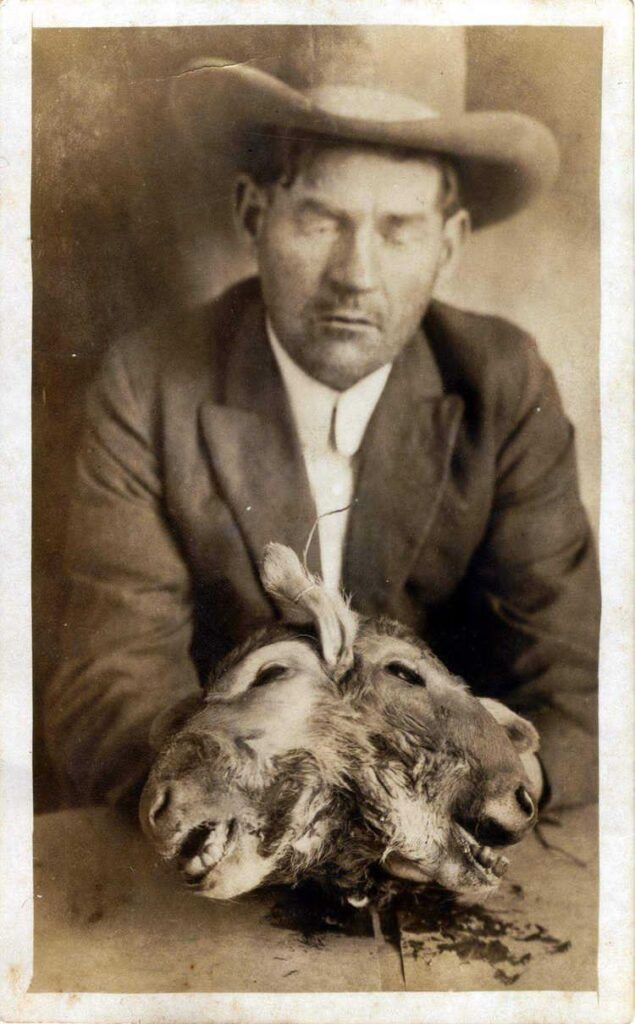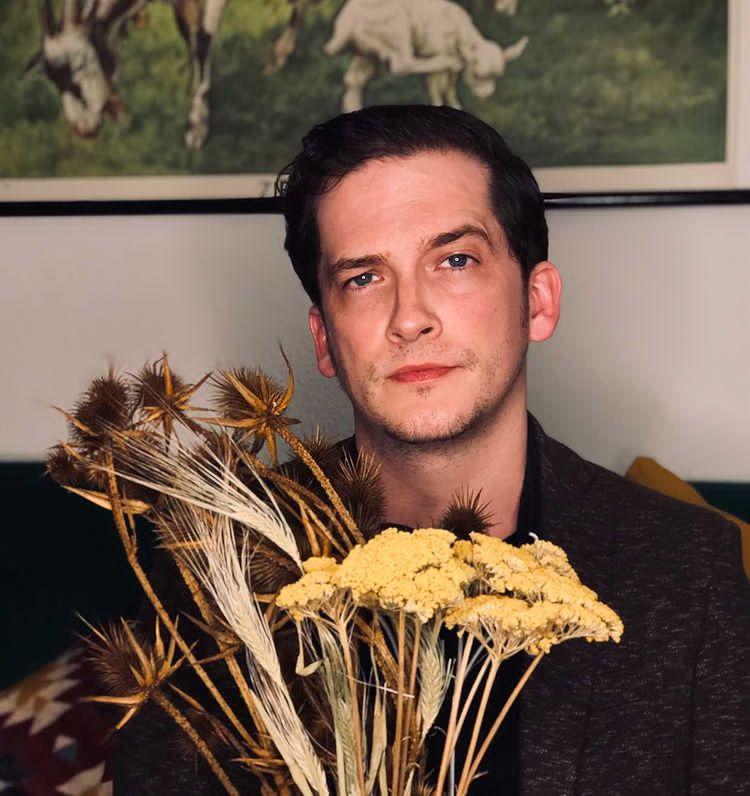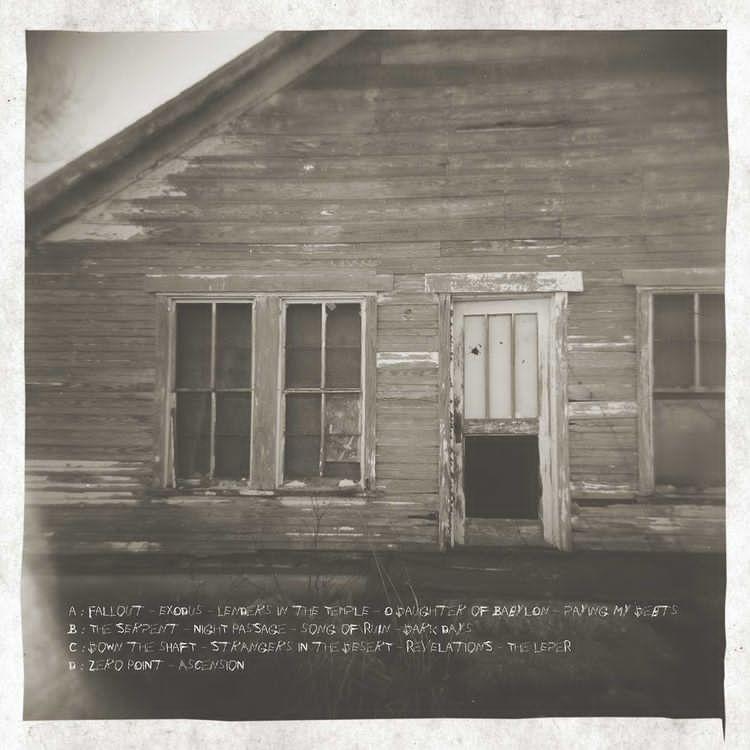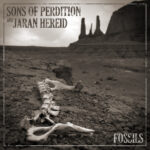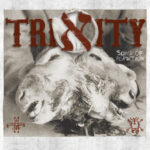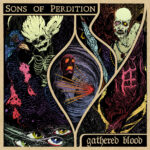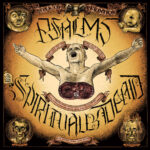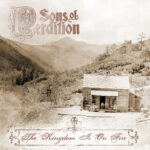**English version of the article and interview at the bottom**
Aproximadamente hace dos décadas, de entre distintas regiones de Estados Unidos, Canadá y Australia, surgió un ejército de entes que usando como arma la música, conformarían un movimiento musical conocido como «Southern Goth».
La principal característica de estas bandas, era esa mezcla de country, folk, bluegrass, blues, rock y gótico, con elementos obscuros, espirituales y religiosos. Un estilo en donde las influencias de músicos como Marty Robbins, Hank Williams, Webb Pierce, Johnny Cash, The Carter Family, Steve Earle, Ernest Tubb, se mezclaban con el sonido de Joy Division, Nick Cave, etc.
Antes de que el género fuera llamado así, ya existían intentos musicales muy similares, en manos de músicos como Johnny Cash, o los mismos Creedence Clearwater Revival y su ‘Bad Moon Rising’, o el mismo Ernest Tubb y su ‘Saturday Satan, Sunday Saint’, o fuera del country, el mismo Nick Cave. Pero sería hasta la aparición, a principios de los noventas, de la banda 16 Horsepower, que el género toma forma y terminaría por consolidarse con la aparición de bandas como Graveyard Train, The Dead South, Lonesome Wyatt, Blues Saraceno, King Dude, Highlonesome, Me and That Man, Desert Noises, Boneyard Rider, Crooked Still, Agnostic Mountain Gospel Choir, y hasta Hank III, quien ha incursionando en algunas canciones.
Entre esta ola, surgió una banda originaria de Texas, que giraba en torno a un solo hombre, y músicos que se agregan a la alineación o la abandonan para seguir sus proyectos. Con el llamativo nombre de Sons of Perdition, el único miembro fijo de la banda, Zebulon Whatley, iniciaría un camino musical y espiritual, con uno de los actos más destacados en este género, debido a su calidad.
Y para hablarnos de esta agrupación, quien mejor que el propio Zebulon Whatley, que conversó con nosotros, acerca del origen del nombre, arte gráfico, el streaming, y futura música, entre varias cosas más.
Mike Riott: Algo que llama mucho la atención respecto a Sons of Perdition, es el nombre ¿De dónde proviene?
Zebulón Whatley: El nombre de Sons of Perdition, proviene de la Biblia. Yo era muy religioso cuando era más joven, así que estaba bastante familiarizado con él. Sólo había un par de «hijos de perdición» allí, así que sabías que era un club bastante exclusivo. Básicamente, estos tipos estaban irremediablemente condenados. No importa lo que hicieran, estaban condenados irremediablemente. Eso se sintió bien para mí, especialmente para una banda de gospel, de fuego y azufre, que es lo que yo quería hacer con 22 años. Quería llevar la rareza evangélica que vi en la iglesia a su extremo lógico para mostrar lo incómodas que podían ser las cosas sin dejar de ser bíblicamente “correctas”.
MR: En su último álbum, hasta la fecha, ‘Ghatered Blood‘, el sonido se fue en una dirección musical más space, incluso con elementos doom ¿Hay una diferencia de influencias musicales entre ‘The Kingdom is on Fire‘, hasta llegar a ‘Gathered Blood‘?:
ZW: Sí, solía pensar que trabajaba en el vacío y que no estaba realmente influenciado por lo que escuchaba. Obviamente estaba equivocado. Cuando escucho mis álbumes más antiguos (que admito hacer de vez en cuando), es obvio para mí exactamente lo que estaba escuchando en ese momento. Para el álbum The Kingdom Is On Fire, esto significó un montón de country clásico y algunas cosas más nuevas como Nick Cave, PJ Harvey, Depeche Mode, etc. Debería haber sido más obvio, pero me di cuenta de esta influencia externa un poco antes de comenzar a trabajar en Gathered Blood. No quería que ese álbum sonara como cualquier otra cosa, así que dejé de escuchar a mis bandas favoritas durante el año que estaba grabando. Solo escuché podcasts científicos y listas de reproducción aleatorias de música de los años 20 y 30’s, ya que no estaba muy familiarizado con la mayor parte. Esto me permitió volverme más hacia adentro y hacer algo extraño que obviamente fue influenciado por cosas externas.
Además, tengo una mala tendencia a tener pequeños bucles de dos o tres segundos atascados en mi cabeza durante horas. Esto puede ser de gran ayuda si tengo problemas para resolver un problema con una de mis canciones, pero suele ser una gran distracción. Escuchar cosas desconocidas me ayudó a mantener la cabeza despejada.
MR: Háblanos un poco del proceso de grabación, y el papel de los otros miembros de la banda.
ZW: Varía mucho de un álbum a otro y de una canción a otra. La escritura y la grabación se suelen hacer juntas, ya que siempre grabo en casa. Como ejemplo, les hablaré sobre la canción ‘Burning Boat’ de nuestro próximo álbum, Heathen Hof: Para este álbum, quería evitar las notas precisas tanto como fuera posible, lo que descartaba el piano (y la guitarra, en su mayor parte). Tuve la idea de hacer un instrumento con bandas de goma porque sonaba realmente caótico, así que colgué un montón de ellas sobre una pequeña caja de metal. Solo por su naturaleza, variaban en tono y ninguno estaba afinado. Inventé algunas melodías punteando las gomas elásticas en diferentes órdenes y armé una canción. Luego agregué algunos coros como suelo hacer, donde sólo canto “ooh” y “ahh” para sugerir algún tipo de estructura. Le envié esto a Simon Broke y Eli Rose, quienes forman el resto de la banda para este álbum. Luego escribí algunas letras y grabé una versión aproximada mientras jugaban, agregando bajos y varios otros sonidos e instrumentos. Una vez que mezclé sus contribuciones en la canción, hice una toma vocal adecuada.
Por lo general, hay un poco de ida y vuelta, ya que las canciones toman forma lentamente con cosas que se agregan y eliminan en capas. Eli envió algunos fragmentos más que se sumaron a la textura de la canción, que luego me dio algunas ideas de cosas nuevas que podría agregar, y así sucesivamente. Nunca trabajamos con mucha prisa.
Simon ha tocado el bajo en todos los álbumes desde Trinity. Esta es la primera salida de Eli con la banda. Cada uno aporta sus propias habilidades e influencias al proyecto. A diferencia de mí, ellos realmente saben lo que están haciendo, lo que me da un poco más de libertad para actuar como un bebé perdido en el bosque. Soy completamente ignorante cuando se trata de música. No estoy orgulloso del hecho; Solo digo lo obvio. Aprendí los acordes básicos de guitarra hace 25 años y simplemente invento todo lo demás en función de las necesidades de la canción. Simon es un bajista increíble. Tiene muchos matices y aborda las cosas de una manera realmente filosófica que puede tener un impacto profundo en la sensación y la dirección de una canción. Eli sabe moverse en el piano y adopta un enfoque realmente experimental de las cosas. Es un pensador conceptual cuando se trata de estas cosas. Ambos agregan cosas que yo soy incapaz de hacer.
MR: Es evidente que trabajas de forma muy orgánica, de alguna manera mantienes esa tradición folk/country, pero aun así, el sonido, en especial en el álbum Trinity, es muy complejo. Sobre todo, en los arreglos de cuerdas y detalles de producción que surgen a la superficie. ¿Fue un trabajo realizado por completo en un estudio casero?
ZW: Pasé más tiempo escribiendo Trinity que en cualquier otra cosa. Líricamente, es lo más denso y complicado que he escrito. Sin embargo, la música es principalmente improvisada. Por lo general, no pienso tanto en lo que se toca como en cómo se armará todo cuando esté terminado. Por lo general, sólo averiguo partes que creo que funcionan juntas e ingenuamente construyo las canciones. Siempre intento pasar más tiempo escribiendo la música, pero nunca lo hago. Realmente no me considero un músico; solo un retocador.
Sin embargo, me preocupaba que la música que se me ocurriera en la guitarra comenzara a desarrollar demasiado «un sonido», lo cual creo que es sólo una forma amable de decir que algo es predecible. Entonces, comenzando con Gathered Blood, comencé a escribir cosas con instrumentos que no sé tocar. Si no sé qué nota o acorde estoy tocando, es menos probable que caiga en la trampa de «Me gusta que F (acorde Fa Mayor) sea seguida por Am (acorde La Menor)»
Como todos los demás álbumes, lo grabé todo en casa. «Escribí» la mayoría de las partes del violín en un teclado, las transcribí a notación musical con un programa (no puedo leer música), e hice que un violinista local la tocara. Lo que separa a Trinity de nuestros otros álbumes es que es el único por el que pagué para que lo masterizaran profesionalmente. Mi amigo Seth Fleming masterizó The Kingdom is on Fire, y yo mastericé el resto, por lo que no están particularmente bien masterizados.
No tengo una buena configuración de grabación. Solo grabo todos los instrumentos acústicos lo más cerca posible del micrófono y luego uso la reverberación para construir un mundo a su alrededor. Me he encontrado a mí mismo bajando un poco la reverberación con cada álbum desde Psalms For The Spiritually Dead. Ese suena como si estuviera grabado en una cueva porque estaba escuchando mucho blues antiguo y doo-wop.
MR: Mencionaste el tema de músicos externos que colaboraron con la banda. Es muy común encontrar voces femeninas y masculinas en la discografía de Sons of Perdition, entre ellas la de Lonesome Wyatt. ¿Puedes hablarnos un poco más sobre esas colaboraciones?
ZW: Sé que nunca me haré rico haciendo música, pero me da la oportunidad de trabajar con algunas personas a las que realmente admiro. Y dado que los dos primeros álbumes eran básicamente álbumes en solitario, fue el único tipo de socialización musical que tuve disponible durante un tiempo.
He trabajado con bastantes personas a lo largo de los años; más de los que me gustaría enumerar. Estamos terminando nuestro séptimo álbum ahora, y la mayoría de nuestros álbumes tienen algunos invitados (incluidos los artistas que trabajan en las portadas de los álbumes), por lo que el número realmente está creciendo.
Tenemos dos nuevas canciones con Debbie Armor de Burd Ellen (a quien recomiendo mucho) en Heathen Hof. Ella es la voz líder en uno, y el otro es un poco a dúo conmigo. Tiene una voz increíble. Mi adorable esposa y las sobrinas de Eli le acompañan en la primera canción. Mantengo una lista actualizada en mi cabeza de personas a las que me gustaría tocar en el futuro si aparece la canción adecuada para ellos.
MR: Algo a destacar, es la parte gráfica tan cuidada, que suelen presentar en cada álbum, incluido el split con Jaran Hereid. Cuéntanos sobre quien se encarga del arte gráfico.
ZW: Yo mismo hago el arte o elijo un artista que creo que encaja con mi espacio mental al escribir el álbum. Tiendo a tratar a los artistas como trato a otros músicos, generalmente brindando la menor orientación posible (aparte del álbum en curso) y sólo confiando en el artista. Soy más tenso con la música, pero en realidad sólo en términos de obtener la sincronización lo más precisa posible.
Supongo que puedo explicarte un poco sobre el arte de cada álbum. Siéntanse libre de cortar esto si es aburrido: Cuando hice The Kingdom Is On Fire, trabajaba como restaurador de fotografías. Quizas haya tomado prestada la imagen de un cliente, porque encajaba con la sensación de aislamiento rural que buscaba.
Me acerqué a Christoph Mueller para diseñar el arte de Psalms For The Spiritually Dead, porque era (y sigo siendo) un gran admirador de su trabajo. Parece que no puedo encontrar el correo electrónico donde originalmente le pregunté si estaría interesado, pero está por aquí en alguna parte. En ese momento estaba haciendo algunos dibujos anatómicos, como disecciones, y yo quería una ilustración médica que mostrara la ausencia de un alma. «Psalm of Eulogy» de este álbum se llamaba originalmente «La muerte de Christoph Mueller». Hice un libro con algunas de mis fotografías y las letras del álbum, pero nunca lo imprimí porque el álbum no tuvo un lanzamiento físico hasta que Secret Records hizo recientemente una reedición en vinilo.
La portada de Trinity está tomada de una foto que mi amigo Andrew encontró mientras renovaba una iglesia de testigos de Jehová en la zona rural del este de Texas, donde crecí. Hice un poco de investigación en busca de una historia de fondo. Aparentemente, el dueño de una estación de servicio tenía esta oveja de dos cabezas (al menos creo que era una oveja). Era una atracción para atraer a la gente a su estación de servicio y vender más gasolina. Pensé que era una buena metáfora visual del álbum. La contraportada del CD es de una foto que tomé en el desierto de Nuevo México con la nube en forma de hongo de la prueba atómica en Trinity, Nuevo México, superpuesta. La narrativa de Trinity tuvo lugar en ubicaciones reales, y la historia termina / se repite en Trinity, por lo que tenía sentido como contraportada.
También obtuve la portada de The Dissolution Orphans de una foto que tomé en Nuevo México. Era un juego de puertas en un edificio destartalado en una ciudad semi-fantasma. Puede que fuera Vaughn, pero no lo recuerdo con certeza. Soy un gran fanático de los pueblos fantasmas. Mis visitas a ellos inspiraron un par de canciones del siguiente álbum.
Mi amigo y bajista de mucho tiempo, Simon Broke, y yo, hicimos un viaje por carretera por el suroeste de Estados Unidos. Uno de nosotros (no recuerdo quién sostenía la cámara en ese momento) tomó una foto del esqueleto de un caballo en las afueras de Monument Valley, Utah. Esa es la portada de Fossils. Jaran Hereid y yo luchamos con el nombre de ese álbum por un tiempo. Simon y yo también hicimos un viaje por carretera a Graceland y Sun Records Studios, una vez. Vomité en Sun Records, que es una de los momentos más destacados de mi vida hasta ahora. Gathered Blood, fue dibujada por Karmazid y coloreada por mí. Ha hecho un montón de obras de arte fantásticas, principalmente para bandas de metal. Parecía apropiado, ya que este álbum no tiene absolutamente ningún indicio de country, y es bastante oscuro y extraño. Quería que el arte visual tuviera una sensación de horror cósmico, y creo que Karmazid capturó eso de manera brillante.
Eso nos trae al presente. James Doherty es un fotógrafo irlandés que utiliza muchas técnicas de fotografía tradicionales como el colodión de placa húmeda, además de la fotografía digital. La desolación rural y la sensación de “no haber sido tocada por humanos” de muchas de sus fotos resume visualmente la intención de nuestro nuevo álbum, Heathen Hof, así que me puse en contacto con él para usar una de sus fotos. Él aceptó amablemente. Mi esposa, Gabbie Vasquez, elaboró para este álbum un logotipo de la banda cuasi-psicodélico, esto para enfatizar aún más lo que queremos lograr con él.
MR: Siguiendo con el tema de lo visual, en una ocasión, diste a conocer una portada descartada para el Gathered Blood. Una imagen que podría resultar fuerte para algunos. Incluso remite a las portadas de bandas de death metal y grind. ¿Cuál fue la razón para no incluirla?, ¿quisieron evitar la polémica, o incluso la confusión de género musical, que podría provocar?
ZW: No, nunca me ha preocupado la controversia. No somos lo suficientemente conocidos como para que eso sea una preocupación. Esa imagen era sólo el equivalente visual de un título provisional para un proyecto. Gathered Blood lleva el nombre de Cuchumaquic, un demonio que habita en Xibalba, en la mitología maya. Si bien esa portada descartada funcionó para la sensación general del álbum, no era una obra de arte original (era una versión modificada de una vieja pintura de Géricault).
Además, no pensé que hiciera lo suficiente para honrar realmente la idea de Cuchumaquic. Pensé que Karmazid haría un mejor trabajo al unir todo, y creo que fue exactamente lo que hizo.
MR: Siendo un músico que en cada álbum cuida mucho la parte gráfica, para que sea un concepto redondo con la parte musical, ¿Cuál es tu postura respecto a las plataformas de streaming (no negamos su utilidad al momento de difundir la música), en donde la parte visual/booklet, se pierde casi por completo?
ZW: Sí, tengo sentimientos encontrados sobre el streaming. Al crecer como un niño extraño en la zona rural del este de Texas, era difícil conseguir música nueva de cualquier forma orgánica, por lo que tengo un poco de envidia de las personas que crecen con el streaming. Sin embargo, diseñar portadas de álbumes que sé que probablemente solo se verán como una miniatura es bastante deprimente.
Una de las principales cosas que ha cambiado para mí es el ritual de escuchar música. Por supuesto, crecí en la era de los casetes y los CD’s, pero creo que los discos de vinilo realmente acertaron en cuanto al ritual de escuchar música. La obra de arte era enorme. Las notas a menudo tenían letras. Realizar este ritual de sacar con cuidado el disco de la portada, sacudir el polvo, dejar caer la aguja, mirar la enorme portada mientras el mundo desaparecía a tu alrededor, dar la vuelta al álbum a la mitad y empezar de nuevo. Es genial. Mucho de lo que hizo que los discos fueran una molestia también les dio este aspecto extrañamente nostálgico. Y a diferencia de las grabaciones, Internet no huele.
No soy un «chico de discos», por cierto; no en un sentido purista. Tengo algunos discos, pero consumo música como puedo. Dicho esto, no echo de menos casetes o CD. Eran basura y, en el mejor de los casos, un compromiso.
MR: Sons of Perdition nace como parte de esta ola musical conocida como Southern Goth, una ramificación dentro de la música country. La aparición de bandas como la tuya, y otras como Highlonesome, Blues Saraceno, Lonesome Wyatt, King Dude, Me And That Man, Angry Johnny & The Killbillies, Graveyard Train, The Dead South, y por supuesto, los veteranos 16 Horsepower, vino a representar un contrapeso ante el llamado country pop, tan de moda hoy en día, al presentar un estilo oscuro y espiritual, en donde se asoman influencias que van de músicos como Marty Robbins, Webb Pierce, Johnny Cash, Merle Haggard, Hank Williams, a Nick Cave, Clan of Xymox, Joy Division, Two Witches, etc. Desde tu perspectiva, y a dos décadas aproximadamente del surgimiento de este movimiento ¿cómo fue el recibimiento de esta mezcla musical, de parte de los fanáticos del country clásico?
ZW: Felizmente ignoraba que el «Southern Goth» existía como género musical cuando comencé a grabar nuestro primer álbum. Lo más parecido al género que escuché, fue una cantidad poco saludable de Nick Cave and the Bad Seeds y algunos discos de Marty Robbins. Me han gustado ambos desde al menos mediados de los noventa. Siento que muchos de los fanáticos del género (que creo que estamos operando completamente fuera de este punto) tienen un amor por la música country antigua, entre otras cosas. Sin embargo, sospecho que es una calle de un solo sentido. No creo que muchos fanáticos de la música country tradicional se sientan necesariamente atraídos por la música country gótica, ni hayan estado expuestos a ella. Descubrir que otras personas estaban interesadas en este tipo de cosas, por pocas que fueran, fue una sorpresa para mí. Cuando crecí en una zona rural de Texas, lo único que escuchaba la gente a mi alrededor era el country pop de los 80 y los 90. La gente puede decir cosas buenas sobre algunos de los actos más antiguos, pero no conocía a nadie que los hubiera escuchado. Ni siquiera la gente mayor.
MR: A lo largo de la entrevista, has mencionado detalles sobre el próximo álbum de la banda. ¿Hay fecha aproximada de lanzamiento?
ZW: Lamentablemente no. Recientemente descubrí que el micrófono que he estado usando está defectuoso, por lo que necesito volver a grabar todas mis voces y algunas otras cosas. Pedí un micrófono nuevo, así que ahora sólo estoy esperando.
**********************************************************************************
Approximately two decades ago, from among different regions of the United States, Canada and Australia, an army of entities emerged that, using music as a weapon, would form a musical movement known as «Southern Goth».
The main characteristic of these bands was a mixture of country, folk, bluegrass, blues, rock and gothic, with dark, spiritual and religious elements. A style where the influences of musicians such as Marty Robbins, Hank Williams, Webb Pierce, Johnny Cash, The Carter Family, Steve Earle, Ernest Tubb, were mixed with the sound of Joy Division, Nick Cave, etc.
Before the genre was named as such, there were already very similar musical attempts, in the hands of musicians like Johnny Cash, or the Creedence Clearwater Revival and his ‘Bad Moon Rising’, or the same Ernest Tubb and his ‘Saturday Satan, Sunday Saint’, or out of country, Nick Cave himself. But it would be until the appearance, in the early nineties, of the band 16 Horsepower, that the genre took shape and would eventually consolidate with the appearance of bands such as Graveyard Train, The Dead South, Lonesome Wyatt, Blues Saraceno, King Dude, Highlonesome, Me and That Man, Desert Noises, Boneyard Rider, Crooked Still, Agnostic Mountain Gospel Choir, and even Hank III, who has dabbled in some songs.
Amid this wave, a band from Texas emerged, revolving around a single man, and musicians who join or leave the line-up to pursue their projects. With the striking name of Sons of Perdition, the only fixed member of the band, Zebulon Whatley, would start a musical and spiritual path, with, due to his quality, one of the most prominent acts in this genre.
And to tell us about this group, who better than Zebulon Whatley himself, who spoke with us, about the origin of the name, graphic art, streaming, and future music, among several other topics.
MR: Something that draws a lot of attention regarding Sons of Perdition, is the name. Where does it come from?
ZW: The name Sons of Perdition came from the Bible. I was really religious when I was younger, so I was pretty familiar with it. There were only a couple of “sons of perdition” in there, so you knew it was a pretty exclusive club. Basically, these guys were irredeemably damned. No matter what they did, they were hopelessly doomed. That felt right to me, especially for a hellfire-and-brimstone gospel band, which is what 22-year-old me wanted to do. I wanted to take the evangelical weirdness I saw at church to its logical extreme to show how uncomfortable things could be while still being biblically “right”.
MR: On your last album to date, Ghatered Blood, the sound went in a more space musical direction, with even doom elements. Is there a difference in musical influences between The Kingdom is on Fire, and Gathered Blood?
ZW: Yeah, I used to think that I worked in a vacuum, and that I wasn’t really influenced by what I listened to. I was obviously wrong. When I listen to my older albums (which I admit to doing once in awhile), it’s obvious to me exactly what I was listening to at the time. For the The Kingdom is on Fire album, this meant a bunch of classic country and some newer stuff like Nick Cave, PJ Harvey, Depeche Mode, etc. It should have been more obvious, but I became really aware of this external influence a bit before I started working on Gathered Blood. I didn’t want that album to sound like anything else, so I stopped listening to any of my favorite bands for the year or so I was recording. I just listened to science podcasts and random playlists of 1920’s and 30’s music, since I wasn’t very familiar with most of it. This let me turn inward more, and make something weird that wasn’t as obviously influenced by external stuff.
Also, I have a bad tendency to get little two or three second loops stuck in my head for hours. This can really help if I’m having trouble figuring out a problem with one of my songs, but it’s usually just a huge distraction. Listening to unfamiliar stuff helped me keep a clear head.
MR: Tell us a bit about the recording process, and the role of the other members of the band.
ZW: It varies a lot from album to album and song to song. The writing and recording are usually done together since I’ve always recorded at home. As an example, I’ll tell you about you about the song ‘Burning Boat’ from our upcoming album, Heathen Hof: For this album, I wanted to avoid precise notes as much as possible, which ruled out piano (and guitar, for the most part). I had an idea of making an instrument out of rubber bands because it sounded really chaotic, so I strung a bunch of them over this little metal box. Just by their nature, they varied in tone and none were in tune. I made up a few melodies by plucking the rubber bands in different orders, and pieced together a song. Then I added some backing vocals like I usually do, where I just sing “ooh” and “ahh” to suggest some kind of structure. I sent this to Simon Broke and Eli Rose, who make up the rest of the band for this album. Then I wrote some lyrics and recorded a rough version while they were tinkering around, adding bass and various other sounds and instruments. Once I got their contributions mixed into the song, I did a proper vocal take.
There’s usually quite a bit of a back and forth, as songs slowly take shape with things being added and stripped away in layers. Eli sent in some more bits that added to the texture of the song, which then kicked off some ideas from me of new things I could add, and so on. We never work in much of a hurry.
Simon has played bass on every album since Trinity. This is Eli’s first outing with the band. They each bring their own skills and influences to the project. Unlike myself, they actually know what they’re doing, which gives me a bit more freedom to act like a babe lost in the woods. I’m wholly ignorant when it comes to music. I’m not proud of the fact; I’m just stating the obvious. I learned basic guitar chords 25 years ago and I just make up everything else based on what the song needs. Simon is a hell of a bass player. He has a lot of nuance and approaches things in a really philosophical way that can have a profound impact on the feel and direction of a song. Eli knows his way around a piano and takes a really experimental approach to things. He’s a conceptual thinker when it comes to this stuff. They both add things that I’m incapable of doing.
MR: Obviously you work in a very organic way, in a way you keep that folk / country tradition, but still, the sound, especially on the Trinity album, is very complex. Especially in the string arrangements and production details that come to the surface. Was it a work done entirely in a home studio?
ZW: I spent more time writing Trinity than I have on anything else. Lyrically, it’s the densest, most complicated thing I’ve written. The music is mostly improvisational, though. I usually don’t put as much thought into what’s played as to how it’ll all piece together when it’s done. I usually just figure out bits that I think work together, and naively build up the songs. I always intend to spend more time writing the music, but never do. I don’t really consider myself a musician; just a tinkerer.
I was worried that the music I came up with on guitar was starting to develop too much of “a sound,” though, which I think is just a kind way of saying something is predictable. So, starting with Gathered Blood, I started writing stuff on instruments I don’t know how to play. If I don’t know what note or chord I’m playing, I’m less likely to fall into the trap of, “I like F (chord F) to be followed by Am (chord Am).”
Like all the other albums, I recorded it all at home. I “wrote” most of the violin parts on a keyboard, transcribed them to musical notation with a program (I can’t read music), and had a local violinist play it. The thing that separates Trinity from our other albums is that it’s the only one I paid to have professionally mastered. My friend Seth Fleming mastered The Kingdom is on Fire, and I mastered the rest, which is why they aren’t particularly well mastered. I don’t have a very good recording setup. I just record all the acoustic instruments as close to the mic as possible and then use reverb to build up a world around them. I’ve found myself slowly turning the reverb down a bit with each album since Psalms For The Spiritually Dead.
That one sounds like it was recorded in a cave because I was listening to a lot of old blues and doo-wop.
MR: You mentioned the issue of outside musicians who collaborated with the band. It is very common to find female and male voices in the Sons of Perdition discography, including that of Lonesome Wyatt. Can you tell us a little more about those collaborations?
ZW: I know I’ll never get rich making music, but it gives me a chance to work with some people I really admire. And since the first two albums were basically solo albums, it was the only sort of musical socializing I had available for awhile.
I’ve worked with quite a few folks over the years; more than I care to list. We’re wrapping up our seventh album now, and most of our albums have a few guests on them (including the artists who work on album covers), so the number is really getting up there.
We have two new songs with Debbie Armour from Burd Ellen (whom I highly recommend) on Heathen Hof. She sings lead on one, and the other is a bit of a duet with me. She’s got a hell of a voice on her. My lovely wife and Eli’s nieces provide backup on the first song with her.
I keep a running list in my head of people I’d like to hit up in the future if the right song for them comes along.
MR: Something to highlight, is the carefully crafted graphic part that you usually present in each album, including the split with Jaran Hereid. Tell us about who is in charge of graphic art.
ZW: I either make the art myself, or pick an artist who I think fits in with my headspace when writing the album. I tend to treat the artists like I treat other musicians, usually providing as little guidance as possible (aside from the actual album) and just trusting in the artist. I’m more uptight about the music, but really just in terms of getting the timing as precise as possible.
I guess I can walk you through a bit about each album’s artwork. Feel free to cut this if it’s boring: When I made The Kingdom Is On Fire, I was working as a photo restorer. I might have borrowed the image from a customer, because it fit the sense of rural isolation I was going for. I reached out to Christoph Mueller to design the artwork for Psalms For The Spiritually Dead, because I was (and remain) a huge fan of his work. I can’t seem to find the email where I originally asked him if he’d be interested, but it’s around here somewhere. He was doing some anatomical drawings at the time, like dissections, and I wanted a medical illustration that showed the absence of a soul. ‘Psalm of Eulogy’ from this album was originally called ‘The Death of Christoph Mueller’. I made a book of some of my photographs with accompanying lyrics for the album, but never got it printed because the album didn’t have a physical release until Secret Records recently did a vinyl reissue.
The front cover for Trinity is taken from a photo that my buddy Andrew found while renovating a Jehovah’s Witness church in rural East Texas where I grew up. I did a bit of digging for a backstory. Apparently a gas station owner had this two-headed sheep (I think it was a sheep, anyway). It was an attraction to lure people to his gas station to sell more gas. I thought it was a good visual metaphor for the album. The back cover of the CD is from a photo I took in the New Mexico desert with the mushroom cloud from the atomic test at Trinity, New Mexico superimposed. The narrative of Trinity took place across real locations, and the story ends/loops at Trinity, so it made sense as a back cover.
I also got the front cover of The Dissolution Orphans from a photo I took in New Mexico. It was this set of doors on some ramshackle building in a semi-ghost town. It may have been Vaughn, but I can’t remember with any certainty. I’m a big fan of ghost towns. My visits to them informed a couple of songs from the following album.
My long-time friend and bassist, Simon Broke, and I went on a road trip through the Southwestern US. One of us (I can’t recall who was holding the camera at the time) took a photo of a horse skeleton somewhere outside Monument Valley, Utah. That’s the cover for Fossils. Jaran Hereid and I struggled with the name of that album for awhile. Simon and I also went on a road trip to Graceland and Sun Records Studios once. I threw up at Sun Records, which is one of the high-water marks of my life so far.
Gathered Blood was drawn by Karmazid and colored by me. He’s done a ton of fantastic artwork, mostly for metal bands. It seemed fitting since this album has absolutely no hint of country, and it’s pretty dark and strange. I wanted the artwork to have a cosmic horror feel to it, and I think Karmazid captured that brilliantly.
That brings us to the present. James Doherty is an Irish photographer who uses a lot of traditional photography techniques like wet plate collodion in addition to digital photography. The rural bleakness and “untouched by humans” feel of a lot of his photos visually sums up the intent of our new album, Heathen Hof, so I got in touch with him about using one of his photos. He graciously agreed to it. My wife, Gabbie Vasquez, drew up the quasi-psychedelic band logo for the album to further emphasize what we’re going for with the album.
MR: Continuing with the visual theme, on one occasion, you released a discarded cover for ‘Gathered Blood’. An image that could be strong for some. It even refers to the covers of death metal and grind bands. What was the reason for not including it? Did you wanted to avoid the controversy, or even the musical genre confusion, that it could cause?
ZW: Nah, I’ve never worried about controversy. We aren’t well known enough for that to ever be a concern. That image was just the visual equivalent of a working title for a project. Gathered Blood was named after Cuchumaquic, a demon who inhabits Xibalba in Mayan mythology. While that discarded cover art worked for the overall feeling of the album, it wasn’t an original artwork (it was a modified version of an old Géricault painting). Also, I didn’t think it did enough to really honor the idea of Cuchumaquic.
I thought Karmazid would do a better job of tying the whole thing together, and I believe he did exactly that.
MR: Being a musician who takes great care of the graphic part in each album, so that it is a round concept with the musical part. What is your position regarding streaming platforms (we do not deny their usefulness when spreading the music), where the visual / booklet part is almost completely lost?
ZW: Yeah, I have mixed feelings about streaming. Growing up as a weird kid in rural East Texas, new music was hard to come by in any kind of organic way, so I’m a bit envious of people who grow up with streaming. Designing album covers that I know will probably only ever be seen as a thumbnail is pretty depressing, though.
One of the main things that’s changed for me is the ritual of listening to music. Granted, I grew up in the age of cassettes and CD’s, but I think vinyl records really nailed the ritualistic side of listening to music. The artwork was massive. The liner notes often had lyrics. You undertook this ritual of carefully removing the record from the sleeve, brushing off any dust, dropping the needle, staring at the huge cover art while the world disappeared around you, flipping the album halfway through and starting it up again. It’s great. A lot of what made records a nuisance also informed this weirdly nostalgic aspect to them. And unlike records, the internet doesn’t have a smell.
I’m not a “records guy,” by the way; not in any purist sense. I have some records, but I consume music however I can. That being said, I don’t miss cassettes or CD’s. They were garbage, and a compromise at best.
MR: Sons of Perdition comes to life as part of this musical wave known as Southern Goth, an offshoot within country music. The appearance of bands like yours, and others like Highlonesome, Blues Saraceno, Lonesome Wyatt, King Dude, Me And That Man, Angry Johnny & The Killbillies, Graveyard Train, The Dead South, and of course the Veterans 16 Horsepower, came to represent a counterweight to the so-called country pop, so fashionable today, by presenting a dark and spiritual style, where influences that go from musicians such as Marty Robbins, Webb Pierce, Johnny Cash, Merle Haggard, Hank Williams, Nick Cave, Clan of Xymox, Joy Division, Two Witches, etc. From your perspective, and approximately two decades after the emergence of this movement, how was the reception of this musical mix, from fans of classic country?
ZW: I was blissfully unaware that “southern gothic” existed as a musical genre when I started recording our first album. The closest things to the genre that I listened to were an unhealthy amount of Nick Cave and the Bad Seeds and some Marty Robbins records. I’d been into both since at least the mid-nineties. I feel like a lot of the fans of the genre (which I think we’re operating completely outside of at this point) have a love of old country music among other things. I suspect it’s a bit of a one-way street, though. I don’t think a lot of fans of traditional country music are necessarily drawn toward, or have ever even been exposed to, gothic country music.
Finding out that other people were interested in this kind of thing, few though they may be, was a bit of a surprise to me. Growing up in rural Texas when I did, about the only thing people around me listened to was 80’s and 90’s pop country. People might have a nice word to say about a few of the older acts, but I didn’t know anybody that ever listened to them. Not even older folks.
MR: Throughout the interview, you have brought up the theme of the band’s next album. Is there an approximate release date?
ZW: Unfortunately, no. I recently found that the microphone I’ve been using is defective, so I need to re-record all of my vocals and a few other things. I’ve ordered a new mic, so now I’m just waiting.


